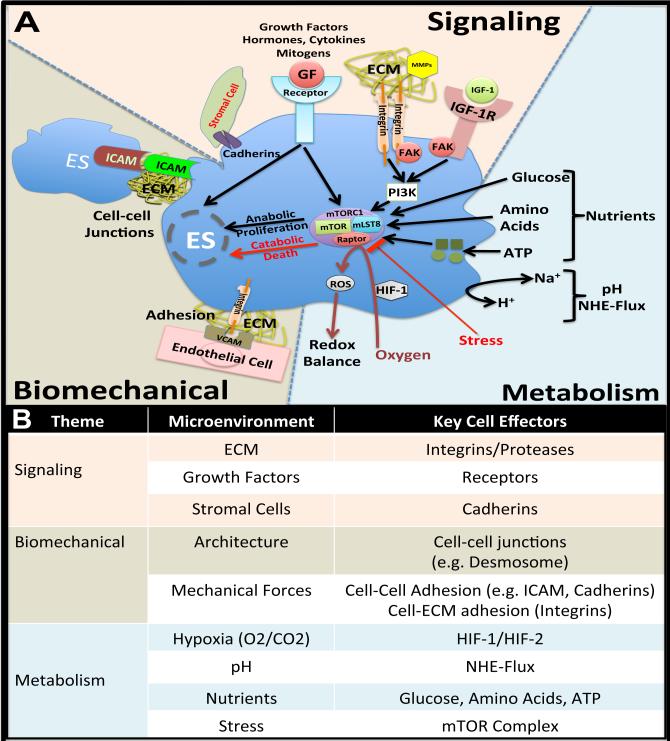Figure 1.
(A) Principal components of the tumor microenvironment that affect cell behavior. Signaling factors include ECM, GFs, etc. Biomechanical forces include 3D architecture and mechanical loading. Hypoxia, pH, nutrients and stress are affected affecting malignant cell phenotype. (B) Key cell effectors in tumor microenvironment. Abbreviations: GF, growth factor; ECM, extracellular matrix; MMPs, metalloproteinases; IGF-1, insulin growth factor 1; IGF-1R, insulin growth factor 1-receptor; FAD, focal adhesion kinase; PI3K, phosphatidylinositide 3-kinases; ATP, Adenosine triphosphate; mTOR, mammalian target of rapamycin; NHE-Flux, sodium-proton exchanger; HIF-1, hypoxia inducible actor-1; ROS, reactive oxygen species; and ICAM, intercellular adhesion molecule 1.

